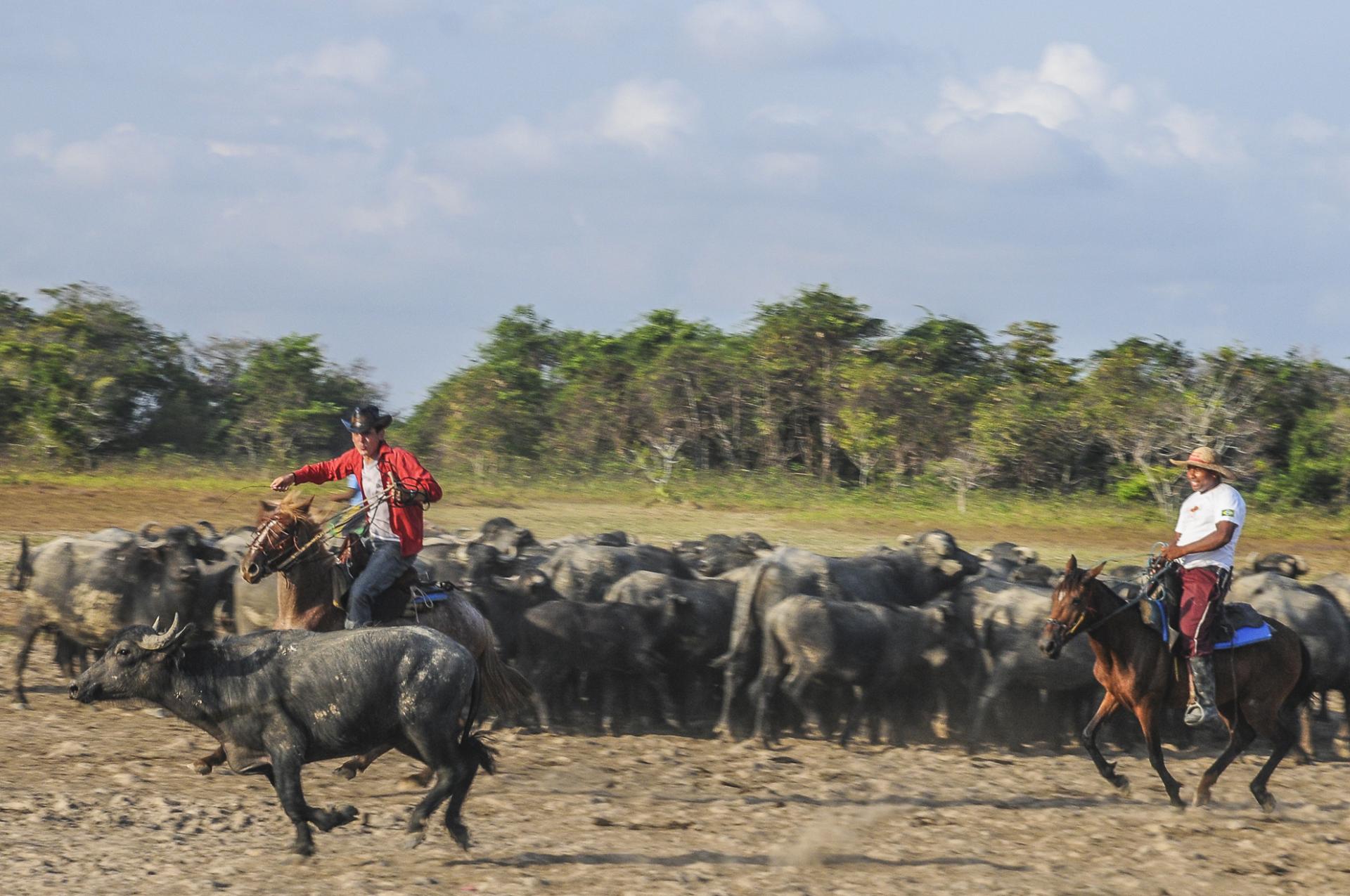Horns and tradition The art of berrante in brazilian cattle farming

The deep and unique sound of the berrante horn can already be recognized from afar. It is the gateway to the deep traditions of rural cultures in Brazil. For this reason alone, you should find out more about this musical instrument on your next Brazil vacation to the more rural regions of the country.
In this article, we will take a closer look at the origins of the berrante, how it is made and played, and why it makes a great cultural contribution.
What is a berrante?
The berrante describes a traditional Brazilian horn that is often used in cattle breeding. Due to its particularly curved shape and structure, it differs greatly from other horns. The berrante horn is mainly used to guide herds of cattle and control the animals' attention. It is not only a practical tool for working in the pastures, but also a cultural symbol that represents the Brazilian cattle breeders' connection to nature and their craft.
Where does Berrante come from?
The roots of berrante can be traced back to the Brazilian ranching culture, " cultura sertaneja". During the 17th century, when Brazil was still a Portuguese colony, delegations crossed the country to bring cattle from one region to another. Over time, the cattle were taken from the coast further inland of São Paulo, Minas Gerais and Mato Grosso. Berrantes were used to keep the cattle together on this long and exhausting journey. The horns made it possible to "talk" to the animals and communicate with each other, as the deep sound of the berrantes could be heard for miles.
How is it made?
The production of a berrante is an artisanal process carried out by experts. Traditionally, the horn of cattle is used. However, nowadays horns from caracu and guzerá bulls are also used, as their surface is easier to work. It takes four to five individual horns to make a single berrante horn, which are then joined together to give the horn its curved shape. When joining them together, it is important to ensure that the seams fit directly on top of each other, otherwise the sound of the horn will
be lost.
The sound of the Berrante
The Berrante can be used to play up to five different sounds. A distinction is made between the following:
- Toque de solta
- O estradão
- O rebatedouro
- A queima do alho
- O floreio
The sound "Toque de solta" is played early in the morning to wake up the herd from the previous night. While the horn player plays continuously and calmly, the individual animals are counted.
"O estradão" is a revitalizing sound that is played to cheer up the herd after a long journey. Due to the reverberation of this sound, it is often associated with the marching of soldiers.
If there is a risk of imminent danger, "O rebatedouro" is played, a danger warning sound similar to a signal tone.
A particularly popular sound within ranch culture is "A queima do alho". This sound signals a break or meal time.
The last sound, "O floreio", is a free melody or improvised sound that is mainly played for fun.
The Berrante Competition
The aim of the Berrante Competition is not only to give the best berrante players the opportunity to showcase their skills in playing the horn. This competition also promotes the preservation of a tradition and provides a platform for the community to celebrate cultural identity.
The Berrante Competition is the highlight of the annual "Festa do Peão de Barretos". Berrante players from all over the country come together to determine which player performs best in the five aforementioned sounds of the berrante. What is particularly interesting is that the women's category is becoming increasingly important with each passing year.
The rural regions of Brazil often don't seem quite as well known or popular as the metropolises of Rio de Janeiro and São Paulo. However, they are just as rich in Brazilian culture and tradition. It is therefore worth seeing the art of berrante for yourself during your Brazil trip.
Sources: independentes.com.br, blog.rodeowest.com.br, blog.cowboystore.com.br

